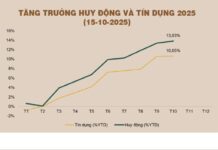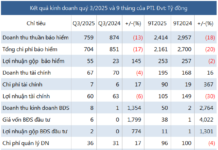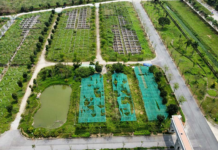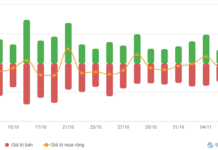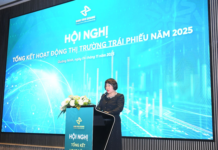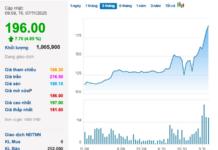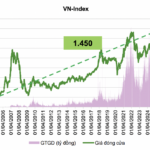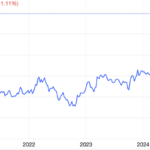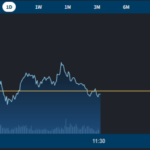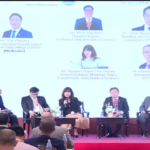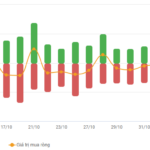“The Big Four” Resolves Uncertainty and Instability
At the seminar, Analyst Director Trinh Duy Viet summed up the first half of 2025 with two keywords: uncertainty and instability.
The instability stems from various new and old conflicts, ranging from Russia-Ukraine to Israel-Iran and most recently Cambodia-Thailand. However, their impact on the Vietnamese market is not significant.
The most notable point is the uncertainty arising from the new tax policy of President Donald Trump in April, which strongly affected the market. After tense negotiations, on July 12, Vietnam was one of the first three countries to reach a tax agreement, and the market sentiment was very positive at that time. As of August 1, Vietnam has basically agreed on the applicable tax rate.
Currently, there is still an issue that needs clarification: the definition of transshipment goods, which is expected to be announced by the US in August. Once this definition is clear, FDI investment in Vietnam will resume.
Vietnam is currently subject to a 20% tax rate, which is not significantly higher than the average of 15-20% of competing FDI-attracting countries such as Japan, South Korea, and the EU, so it does not severely affect Vietnam’s competitive advantage. In Southeast Asia, Vietnam is in the group with lower tax rates, with some countries at only 10-15% due to less trade with the US.
On a macroeconomic level, the first indicator to note is the trade surplus. Despite the increase in import and export activities, the surplus decreased because Vietnam imported some goods in advance to anticipate new taxes. Secondly, the exchange rate is another crucial factor to monitor, although the pressure has eased due to the expectation of a Fed rate cut in September.

Mr. Trinh Duy Viet – Analyst Director, KAFI Securities (right) shared at the seminar
|
Amid these uncertainties and instabilities, the answer lies in the “Big Four” pillars – the policies guiding economic development in the new era. These include Resolution 68 on private economic development, Resolution 66 on legal breakthroughs, Resolution 57 on science and technology development and innovation, and Resolution 59 on international integration.
Among these, Resolution 68 plays a crucial role in placing the private sector in its rightful role and position. If the private sector grows by just 5%, GDP will increase by 2.5%. In terms of efficiency, this sector has demonstrated a faster growth rate than the state sector, despite receiving fewer incentives.
According to the KAFI Analyst Director, in the coming time, Vietnam will implement many large-scale projects with the participation of Vingroup, Hoa Phat, FPT, Thaco, etc., contributing to the formation of private enterprise linkages. Simultaneously, there will be a process of legal unfreezing for nearly 3,000 stalled projects to release more than 235 billion USD in capital, equivalent to nearly 50% of GDP. This significant resource will support sustainable GDP growth in the coming years.
Numerous Bright Prospects for the Market in the Short Term
After the tax policy shock in early April, which led to a severe correction, the Vietnamese stock market has made an impressive comeback. According to Senior Investment Consultant Nguyen Huu Anh Khoa, there are three reasons for this positive development.
Firstly, when the tax policy was issued, the Vietnamese government responded swiftly with specific solutions to mitigate risks. Secondly, a series of reforms to boost the private economic sector were strongly promoted. Thirdly, bottom-fishing domestic money actively participated in the market.
A notable positive aspect is that this recovery is not limited to a few sectors but is widespread, led by industries expected to benefit directly from economic policies, such as banking, real estate, construction materials, and public investment.
An essential turning point is the return of foreign investors since May 2025, indicating that foreign investors have reassessed the market’s growth potential, especially in listed companies.
In terms of valuation, the P/E ratio of the VN-Index is hovering around 13-14 times, while the 10-year average is about 15 times. Although the index is approaching its historical peak, the valuation has not returned to its highest level, typically around 21 times in 2018 or 17-18 times in 2022. This suggests that the market still has room to grow.
According to Mr. Khoa, if the Compound Annual Growth Rate (CAGR) is expected to reach about 15%/year, we can anticipate reaching 1 standard deviation from the 10-year average, implying a P/E of 18-19 times. Thus, both domestic and foreign money is likely to continue flowing into the market in the coming period.
One of the most significant expectations currently is the market upgrade by FTSE Russel, anticipated in September. In the past, Vietnam has made robust preparations to meet the criteria for upgrading. If successful, Vietnam could attract between 700 million USD and 1.5 billion USD from ETF and active funds.
Mr. Khoa assessed that three pillars support the stock market: the return of foreign capital inflows, supportive policies for the private economic sector, and fiscal and monetary policies, especially public investment. Consequently, the key sectors in the upcoming investment strategy include real estate, construction, and construction materials; technology; energy; banking and securities; and retail.
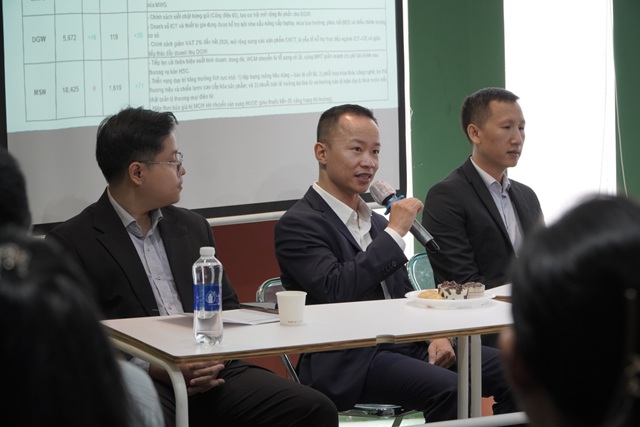 Mr. Nguyen Huu Anh Khoa – Senior Investment Consultant, KAFI Securities (center) shared at the seminar
|
Regarding capital flows, Senior Analyst Nguyen Quoc Van stated that at the beginning of July, after Bloomberg published some positive assessments of the Vietnamese economy, P-Notes funds returned to the Vietnamese stock market and net bought about 10 trillion VND. However, in the second half of July, they quickly net sold about 5 trillion VND due to the Fed’s higher interest rates than Vietnam, leading to capital outflows from emerging markets.
Nevertheless, in recent sessions, the market recorded total transaction values of 2-3 billion USD, but foreign investors only accounted for a few trillion VND, indicating a significant reduction in their proportion and actual impact on the market. Therefore, the pressure from foreign investors is no longer a significant risk factor.
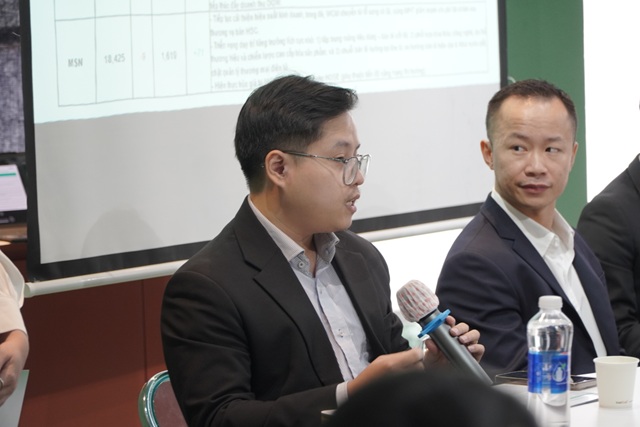 Mr. Nguyen Quoc Van – Senior Analyst, KAFI Securities (left) shared at the seminar
|
Also, at the seminar, in response to a question about the short-term movement of the VN-Index, Mr. Trinh Duy Viet shared that the outlook is very positive. Domestically, interest rates remain low, the government continues to target high growth, and there is ample money in the economy. Additionally, the market upgrade event is approaching. Externally, the environment is gradually becoming more favorable, with the Fed likely to cut interest rates in September and December, and the tax policy becoming slightly clearer.
However, investors should consider two concerning factors. Firstly, if the margin growth rate continues, there may be “tension” in September, but this is only a technical issue. With a few sessions of correction, the market will self-balance. Secondly, which products will be subject to a 40% tax rate by the US, affecting Vietnam’s ability to attract FDI.
According to the KAFI Analyst Director, even in the worst-case scenario, the 1,400-point region is the lowest level the market can reach in 2025.
– 16:48 02/08/2025
“Vice Chair of the Securities Commission: VN-Index Surges Past 1,400, Liquidity Tops VND30 Trillion, but Is It Too Early to Attribute This to Vietnam-US Trade Agreement?”
“We are pleased to share insights on the latest investment trends and opportunities in the market. As the Vice Chairman of the Securities Commission, I am excited to be a part of the Techcombank Investment Conference 2025, held on July 9th. This conference brings together industry leaders and experts to discuss the latest developments and strategies in the world of finance and investment. We aim to provide valuable insights and guidance to investors and businesses alike, navigating the dynamic and ever-changing financial landscape. Join us as we explore the path to financial success and prosperity.”
The Price of Gold Plummets as Investors Rush to Cover Stock Market Losses
The US dollar index and Treasury yields fell during the session, but failed to buoy the precious metals market.






